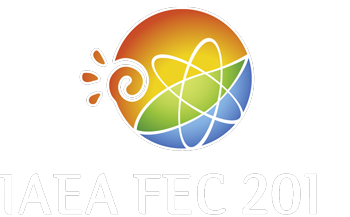Speaker
Dr
Alfredo Portone
(Fusion For Energy)
Description
In the design of next step tokamak devices, it will be of key importance to carefully optimize the plasma magnetic configuration, in particular its elongation, triangularity and aspect ratio. Indeed, the sharp dependence of the safety factor q upon plasma elongation and, as a consequence, of the maximum achievable plasma current in disruption-free operation mode is of paramount importance to achieve high plasma performances and high Q.
The aim of this paper is to study the effects that plasma aspect ratio, plasma-wall normalized distance and plasma current profile have on passive plasma vertical stabilization, this being quantified by the plasma stability margin and instability growth time. Following this first step, the key aspects and figures of merit of plasma active vertical stabilization will be reviewed, with specific emphasis on the maximum disturbances that can be recovered by the plasma active control system with fixed current and voltage ratings. Both in-vessel as well as ex-vessel optimally placed stabilization coils will be considered. State of the art plasma models (as based on linear, MHD theory) and metallic structures (fully 3D structures) will be deployed in study.
The final goal is to derive the dependence of plasma elongation upon the parameters described above in order to achieve robust passive and active stabilization with and without internal coils.
| Country or International Organization | Fusion For Energy (European Commission) |
|---|---|
| Paper Number | PDP-23 |
Author
Dr
Alfredo Portone
(Fusion For Energy)

